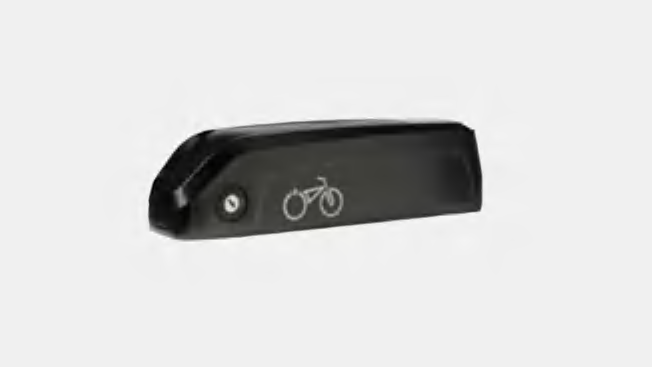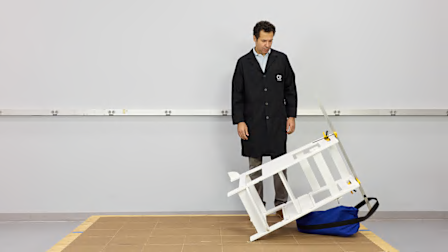Stop Using Batteries in Certain Rad Power E-Bikes Due to Fire Hazard, CPSC Warns
The batteries pose a risk of serious injury and death, the agency says, after 31 reports of fires. But Rad Power isn't offering replacements or refunds.

Certain e-bike batteries from Rad Power Bikes pose a serious risk of injury and death from fires, and consumers should stop using them immediately. That’s according to a safety warning issued this week by the Consumer Product Safety Commission. The lithium-ion batteries have model numbers RP-1304 and HL-RP-S1304.
Anyone who has one of these batteries should immediately remove it from their e-bike and follow their local hazardous waste disposal procedures, the CPSC says. Don’t sell or give away the battery, and don’t toss it in the trash.

Photos: CPSC Photos: CPSC
Rad Power Bikes has refused to agree to a voluntary recall. It told the CPSC that to offer full refunds or replacements for all of the batteries would be financially ruinous. In a statement on the company’s website, Rad Power Bikes said it “firmly stands behind our batteries and our reputation as leaders in the e-bike industry, and strongly disagrees with the CPSC’s characterization of certain Rad batteries as defective or unsafe.”
Consumer Reports asked Rad Power to clarify whether it agrees with the CPSC’s recommendation that consumers stop using the batteries in question. A spokesperson reiterated that the company stands behind the batteries and pointed to its battery safety guidelines.
But CR’s experts say consumers should heed the advice of the CPSC. “Lithium-ion battery fires can be fatal, and the CPSC’s safety warning should be taken seriously,” says Gabe Knight, senior safety analyst. “Everyone with one of these batteries should follow the agency’s advice to immediately stop using it, and dispose of it safely by following local hazardous waste disposal procedures. Yesterday’s warning is a stark reminder that there are no federal safety standards for e-bike batteries, leaving countless Americans at risk of serious injury or death.”
In 2024, Rad Power Bikes announced that its two new e-bike models and two upgrades to existing models would be fitted with its new line of lithium-ion batteries, called Safe Shield. Safe Shield batteries are UL certified, which means they meet a voluntary industry standard. (The two batteries referenced by the CPSC warning aren’t UL certified, UL confirmed to CR.) The company told CR that it no longer has the batteries mentioned in the CPSC warning in stock, either as replacements or as batteries sold with any of its current e-bike models.
In its statement about the CPSC warning, Rad Power said that during the agency’s investigation, the company offered to give customers who have RP-1304 and HL-RP-S1304 batteries an upgrade to Safe Shield models at a discount. But the CPSC determined that it was an insufficient remedy for a recall. When CR asked Rad Power Bikes whether it’s currently offering such a discount to customers, it said that its Safe Shield batteries were currently on sale for up to $150 off for Black Friday. It didn’t mention any remedy available to consumers once the sale was over.
Rad Power bike owners who have one of these batteries and remove it can still ride their bikes without the e-assist, but it will be tough because e-bikes are generally heavier than traditional bikes, says Rich Handel, who leads CR’s testing of e-bikes. He recommends that consumers not opt for an aftermarket replacement battery, because the UL certifications on it could be counterfeit. Buying a Safe Shield replacement battery directly from Rad Power Bikes is an option, although reports of the company’s financial distress could mean consumers have a limited window in which to make that purchase.
Fires caused by e-bike batteries have been an ongoing problem. Handel says consumers should take precautions to reduce the risk, including the following:
- Always inspect the battery before charging and look for any signs of damage, such as dents, bulging, or unusual odors.
- Take care of the battery by keeping it away from water and dirt. If exposed, check for water and corrosion.
- Stop using the battery immediately if you notice any issues and contact the manufacturer for assistance.
- Charge the bike and battery in a cool, dry, and well-ventilated area, away from flammable materials and direct sunlight.
- Never leave the battery charging unattended.
- Unplug it once it’s fully charged, and avoid charging it overnight near combustible materials.
Consumer Reports advocates have also called on the Senate to pass the Setting Consumer Standards for Lithium-Ion Batteries Act, which would set federal safety standards for batteries that power e-bikes, e-scooters, and similar mobility devices. “Despite strong bipartisan support, it has been stalled for months,” Knight says. “There is no reason to delay.”
The Details
Products covered: Rad Power Bikes lithium-ion batteries model RP-1304 and HL-RP-S13, which were found by the CPSC to be a fire hazard. Although Rad Power Bikes didn’t issue a voluntary recall, the CPSC warns consumers to stop using the batteries.
The problem: The CPSC says these two battery models may create a fire hazard by unexpectedly igniting and exploding, especially when the battery or the harness has been exposed to water and debris.
The fix: The CPSC advises consumers to immediately stop using the batteries. You should not just throw them in the trash, your regular recycling, or the used battery recycling boxes found in some home improvement stores. You may be able to bring them to your municipal household hazardous waste collection site, but call ahead of time to ask if it accepts lithium-ion batteries. Otherwise, contact your municipality for guidance on proper disposal.
How to contact the manufacturer: Rad Power Bikes can be reached by phone at 800-939-0310, or via chat on the Rad Power Bikes website (click the yellow chat icon in the bottom left corner of your browser window).
You can find more information in the CPSC’s warning.
Editor’s Note: This article, first published Nov. 25, 2025, has been updated to include additional information provided by UL. It has also been updated with additional information Rad Power shared after publication.




















